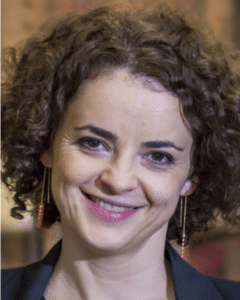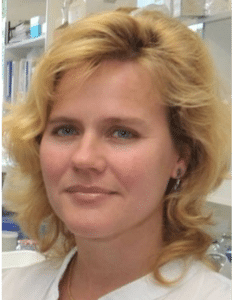Let us begin with an observation. Published on 8th March 2021, “Filles et garçons sur le chemin de l’égalité, de l’école à l’enseignement supérieur” (Girls and boys on the road to equality, from school to higher education) is the latest statistical report from the French Ministry of National Education, Youth and Sport. What has emerged from this survey, which aims to identify the origins of inequalities, is a confirmation of previous studies on the differences in school performance between girls and boys at different ages. The result: girls are as good as boys in science, but they are less likely to go into science careers.
Do girls prefer the humanities and social sciences?
First of all, for the youngest children, there is no difference – neither in appetite nor in ability – with regard to the sciences. In the report, there is a general absence of remarkable differences at this age in relation to scientific disciplines such as mathematics1. In fact, at ages 6–7, 46% of girls compared to 48% of boys have a superior command of problem solving, while 61% of girls compared to 55% of boys have a superior command of language skills. From 10 years onwards, the advantage and interest of boys in maths increases slightly, until 14 years old. In 2019, girls scored an average of 227 points and boys 236 points in the Cedre survey2. But it can be argued that girls’ enthusiasm for maths is similar to that of boys: 31% of girls and 35% of boys look forward to maths sessions.
In the general series, 91% of girls obtain their diploma against 84% of boys. Similarly, in the vocational series, 76% of the girls obtained their diploma compared to 71% of the boys. According to the PISA survey, in most European countries, girls have a clear advantage in reading comprehension. Indeed, it is between the end of lower secondary school and the beginning of upper secondary school that the differences in orientation start to take shape. Girls are more likely to go into humanities and social studies or the care professions (91%), whereas boys tend to go into technical-scientific or industrial occupations (two-thirds of boys choose these professional specialities).

At the end of secondary education, girls are on average more likely to graduate in the scientific stream (93% of girls compared with 90% of boys obtain the scientific baccalaureate) and with better results; 35% of girls obtain a “good” or “very good” grade compared with 29% of boys. As in the case of orientation after the brevet, at the end of the lycée (18 years old), the choice of higher education studies also depends on gender and follows the same trends. Taking all subjects together, young women obtain more diplomas.
Fewer women in scientific careers
In France, 52% of women and 42% of men graduate from higher education, but one year later women find it more difficult to find a job: 66% of women find one compared to 70% of men. They are also paid less than men, with a salary difference of 15.8% in France. They also have fewer stable jobs, such as managerial positions: in France only 36.3% of managers are women3.
Then, as we move up the hierarchy, there are fewer and fewer women: this is the famous “glass ceiling”. In 2019, according to data from the French Ministry of Higher Education, Research, and Innovation, only 25% of university professors, 30% of research directors and 37% of lecturers in France were women4.
Following this observation, the Femmes & Sciences association (in collaboration with the CNRS Occitanie Ouest, the University of Toulouse 3 – Paul Sabatier and the University of Toulouse 2 – Jean Jaurès) carried out the “Masculinities and academic careers – OMéGARS” survey. This study probed the perceptions of male researchers in positions of high responsibility regarding the careers of their female colleagues. The results indicate that the glass ceiling phenomenon is underestimated, sometimes denied, and that possible solutions are somehow hindered5. Indeed, most of the interviewees (research directors and university professors) acknowledged the problem but attributed the cause to the insufficient female pool concluding that there are few women in high positions simply because there are few women at all. All interviewees were opposed to quotas and to the requirement of parity of juries in committees as a solution.
Increasing the presence of women through the nudge
With the aim of increasing the presence of women in the upper echelons of science, Violetta Zujovic, a neuroscientist at INSERM, co-founded the “Comité XX” scheme. “The initiative was born following a remark by the ICM’s International Scientific Council during an internal evaluation. We were alerted to the under-representation of women in the management committee,” she explains. First, the committee took stock of the situation: in 2017, 63% of the institute’s members were women, but only 26% held a management position and 25% were invited to speak at internal seminars6.
“We asked ourselves how we could use neuroscience knowledge, our expertise, to change this situation. Based on these reflections, we set up various initiatives based on cognitive biases.” The committee then put in place subtle efforts (the ‘nudge’), for example communication on the monitoring of gender equality indicators within the institute, organisation of meetings on gender bias, practical workshops, and training for female and male students. The results show that these efforts have been able to change the percentage of women in the INSERM scientific steering committee: today, 50% of the committee is composed of women. Also, in the ICM’s International Scientific Council, 6 out of 11 people are women today, whereas before there was only one. “In addition, we have managed to achieve better results in relation to the Gender Equality Index, a government measure based on several parameters, including the pay gap and the gap in the rate of increase and promotion between men and women. We have gone from 75 out of 100 to 91 out of 100.”
Support through mentoring
May Morris, a biochemist at the Max Mousseron Institute of Biomolecules, oversees the Women & Science mentoring scheme for female PhD students. Founded in Montpellier in 2015, the scheme connects an experienced academic professional (with at least a PhD) with a female student wishing to be monitored, guided, and supported. “The mentoring scheme allows the exchange of experiences and the provision of useful advice for the pursuit of a scientific career, but also to answer individual questions that young women may have, particularly in relation to managing of their personal life and their professional project.”
The scheme also helps doctoral students to set goals, to better understand and develop their skills, and to guide them in their introduction into professional networks. Mentoring takes place over a 12-month period in a spirit of caring, combining monthly meetings between a mentor and a female doctoral student, with group meetings, training, and testimonies from women scientists.
“We have been evaluating the project since 2015 and following the careers of the female PhD students who have benefited from the programme. We have seen a better construction of career plans and a satisfactory professional integration after the thesis. The doctoral students have also learned to gain more self-confidence, to express their needs and to define their objectives. The programme also enabled them to better manage problems in difficult situations.”









